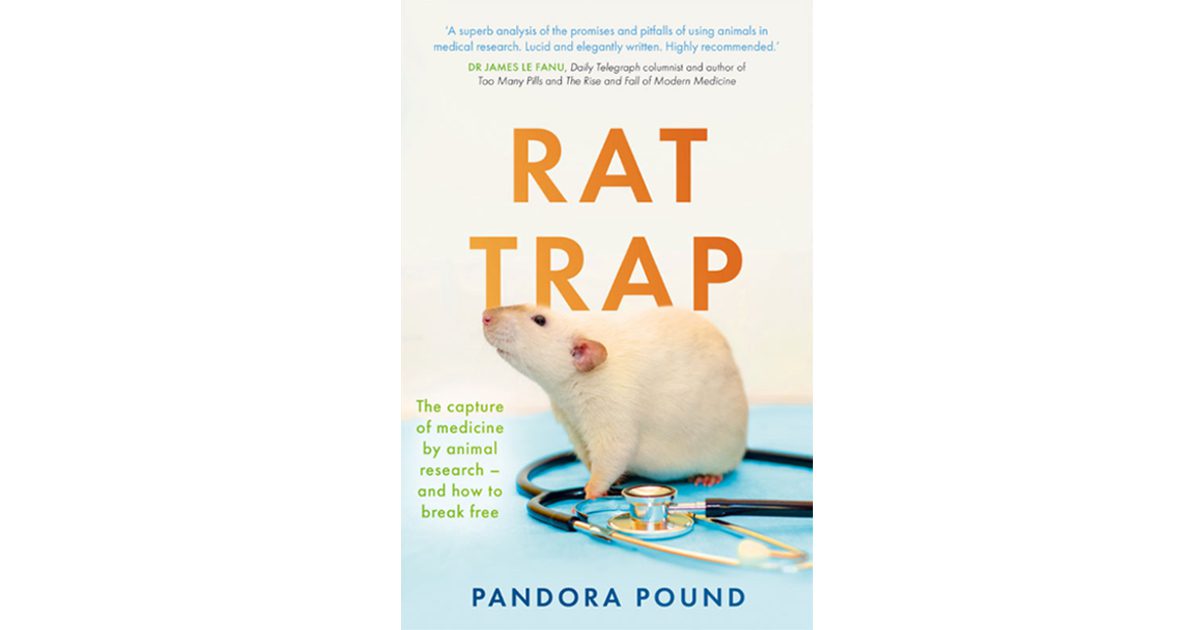
Sep 29, 2023 Review of “The Rat Trap” by Pandora Pound
A new book, The Rat Trap by Pandora Pound, has just been published, criticizing modern medicine’s reliance on animal research. Pound is a medical sociologist now employed by The Safer Medicines Trust, a UK charity whose mission “is to make medicines safer by facilitating a transition to human-focused drug development and testing.” The charity challenges the regulations requiring animal-based safety tests when, in their words, “superior methods exist.”
Pound has been a leading figure in the recent criticisms of the quality of animal research. These challenges began with a 2004 paper (authored by Pound and senior colleagues at Bristol University) published by the British Medical Journal (BMJ) asking, “Where is the evidence that animal research benefits humans?” The paper argued that much animal research is of low quality and that there were very few systematic reviews of animal research’s impact. Pound and colleagues published a follow-up paper ten years later in the BMJ. It was accompanied by a supporting editorial by BMJ editor Fiona Godlee (see commentary by Speaking of Research for full-text copies).
Unsurprisingly, the two BMJ articles elicited a range of primarily negative responses from research scientists who argued that animal research was the cornerstone of medical research and had led to many effective medical therapies. Pound’s book is a more detailed analysis of the initial criticisms of animal research quality in the 2004 and 2014 BMJ papers. Her book also includes a section arguing that the many differences in physiology and biochemistry between animals and humans are also a factor behind the lack of translation to humans of the results obtained in animals.
There is much value in Pound’s book to anybody interested in the debate over the use of animals in biomedical research and testing, whether or not the reader agrees with her premise. However, there are also weaknesses. The brief history of animal research at the beginning of the book would have benefited from reference to the material in French’s superb history, Antivisection and Medical Science in Victorian Society. [French’s analysis of the various competing interests in academic medicine during the 19th century is relevant to the modern debate over animal research.]
Pound’s argument that evolutionary theory creates problems for anybody attempting to extrapolate results obtained in animals to humans is correct but has relatively little traction in biomedical circles. Biomedical researchers already acknowledge the challenges posed in extrapolating from animal research to human biology. However, research advocates typically argue that even though animal studies may not mimic the human situation perfectly (or even that well), the results obtained in animals nevertheless provide important insights. For example, the genetic code was elucidated in studies of micro-organisms. That code and how it is translated into protein is strongly conserved across the animal kingdom. Thus, important insights regarding mammalian DNA were obtained from research on micro-organisms. Animal research on highly conserved biological systems can and does provide insights into human biology. In addition, comparative biologists have made productive use of species differences to increase human understanding of animal and human physiology and biochemistry.
I believe Pound is overly pessimistic in claiming that the animal model paradigm is so entrenched that it will continue to dominate biomedical research, For example, Charles River, perhaps the dominant laboratory animal supplier in the world today, is also investing in alternative technologies. As the companion article in this newsletter indicates, the number of laboratory animals used in research has declined significantly since the mid-1970s in many developed countries.
Pound also mentions the changes in public opinion, which has been steadily turning more hostile towards using animals in research and testing. For example, the Gallup organization conducts an annual poll on moral issues in the USA, including the use of animals in medical research. Gallup reports that the proportion of the American public that views the use of animals for medical science as morally acceptable has declined steadily from 65% in 2001 to 48% in 2023.
While it may not be possible to identify a clear causal link between the falling numbers of laboratory animals being used and the decline in public support for using animals in biomedical research and testing, the two trends are likely connected. Those involved in making and overseeing science policy worldwide should read The Rat Trap and pay close attention to the varying arguments presented by the author.


